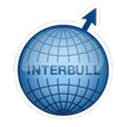CoP Appendix XI - Genetic Traits Exchange
Interbull Centre promotes the collection and facilitates the exchange and conflict resolution for several genetic traits, including recessive traits, via a dedicated module of the Interbull Data Exchange Area (IDEA) called AnimInfo (see Appendix X for more information on how the module works).
Exchange of genetic traits through IDEA/AnimInfo gives several benefits, such as:
- One common platform to share information with other organizations taking part in the service
- Sharing of important genetic information to make better breeding decisions avoiding mating of carriers of recessive diseases or spreading of unwanted alleles in a population.
- As the service is an extension of IDEA pedigree, the consistency of the unique international animal ID is maintained across countries.
- Allowing access to a wider set of information and assuring a smoother and more timely exchange of genetic defects’ information among participating organisations
- Drastically reduce the amount of conflicting information among countries
- Cost reduction by avoiding multiple genetic tests on the same animal for the same traits
Information collected are shared 3 times per year, together with distribution of official international evaluations’ results, to all organisations having signed the specific service agreement (see Appendix I – letter of agreements for genetic traits exchange) and that regularly upload the latest information and actively participate in conflict resolutions.
A minimum requirement for upload is:
- Three times per year, prior to each Interbull Routine Evaluation
- Information on all animals that are included in or contribute to the Interbull Routine Evaluation
The service allows for an easier, safer, smoother and timely exchange of information among participating organisations regarding animals which have been tested carriers of important traits, including recessive traits, and facilitates identification of possible conflicting information and their resolution. Prior to the launch of the Interbull genetic traits exchange service, genetic traits information was exchanged manually and bilaterally between organizations. This was a sub-optimal procedure where often registration of genetic traits was incomplete leading to breeders being often not fully informed thus yielding a problem when carrier animals were mated
If conflicting information on a given type of information for the same animal is detected, the conflict needs to be resolved by the organisations and, if applicable, by the third parties that provided the conflicting information. If they cannot resolve the conflict, they have to contact the bull owner and ask for assistance. Until the resolution of the conflicts, both sets of data on the specific animal is disseminated. Following resolution, the correct information should be uploaded without undue delay. In order to assist with the identification of such conflicts, organisations will receive a report from Interbull Centre including all conflicts found in the system for a given trait.
The service is currently offered for the following breeds: Holstein and Brown Swiss.
Expansion to additional breeds, currently included in an international evaluation, is possible given that a set of standardized coding for the traits of interest is available for the breed at hand. Contact Interbull Centre for more information or for assistance on this step.
Participation to the service is subjected to a fee as reported in Table 1. The fee structure will be in place starting from year 2024.
Table 1 – Fee structure for Genetic Trait Exchange:
Exchange of information for: |
Fee (in Euro) |
One Breed |
1 000 |
Any additional breeds |
500 (per breed) |
